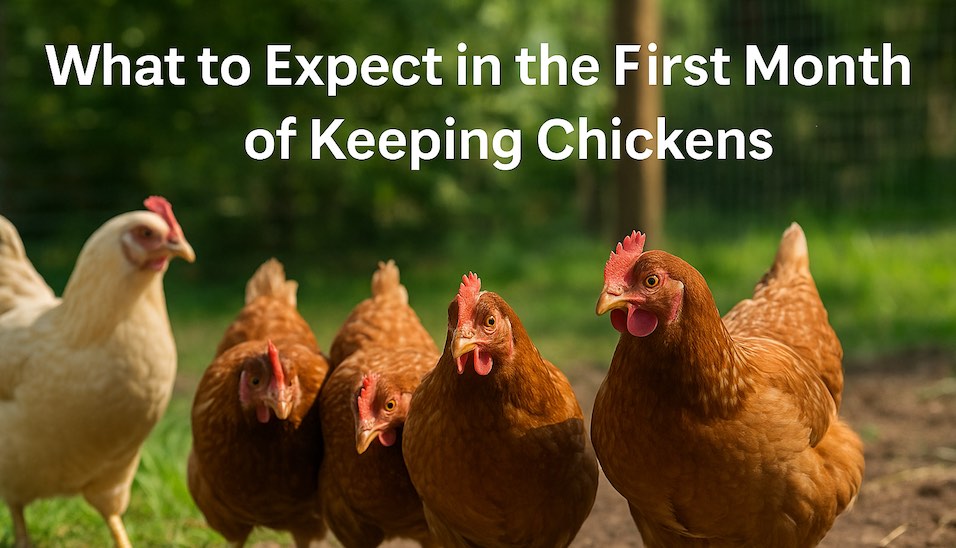Treat and Prevent Depluming Mites in Chickens
Understanding and Managing Depluming Mites in Chickens
Depluming mites, scientifically known as Knemidocoptes gallinae, are a significant concern for backyard poultry keepers.
These microscopic parasites burrow into the feather shafts of chickens, causing intense irritation and feather loss. If left untreated, depluming mites can severely impact the health and productivity of your flock.
In this comprehensive guide, we'll explore how to identify, treat, and prevent these pesky mites to ensure your chickens remain healthy and comfortable.
Buy mite treatment for chickens
What are Depluming Mites?
Depluming mites are parasitic mites that infest the feathers of chickens. Unlike other mites that live on the surface of the skin, depluming mites burrow into the feather shafts and the skin surrounding the feathers.
This burrowing causes irritation and fluid release, which the mites feed on, leading to severe itching and feather plucking by the affected birds.
Symptoms of Depluming Mite Infestation
Identifying a depluming mite infestation early is crucial for effective treatment.
Common symptoms include:
- Feather Loss: Noticeable around the neck, back, and vent areas.
- Intense Itching: Chickens will scratch and preen excessively.
- Scabby Skin: Irritated and thickened skin where mites have burrowed.
- Restlessness: Increased agitation and restlessness due to discomfort.
- Reduced Egg Production: Stress and poor health lead to a drop in egg laying.
Identifying Depluming Mites
To confirm a mite infestation, conduct a thorough physical examination of your chickens, focusing on areas like under the wings and around the vent. Look for signs of mites, such as red or black spots and mite eggs at the base of feathers. Inspect the coop at night using a flashlight to spot mites in crevices and nesting boxes.
Effective Treatments for Depluming Mites
There are two main ways to treat depluming mites on chickens:
On-Bird Treatment: David Grays Poultry Dust
David Grays Poultry Dust is an effective solution for treating mites directly on your chickens. Apply the dust evenly, focusing on areas where mites are commonly found.
Regular application will help keep the mite population under control and ensure your chickens remain healthy.
Off-Bird Treatment: Coopex Spray
Coopex spray is ideal for treating the coop and surrounding environment. Clean the coop thoroughly, removing all bedding and droppings, and spray Coopex in all cracks, crevices, and nesting boxes.
Allow the coop to dry completely for up to 4 hours before reintroducing the chickens. Unless washed off or rained on, Coopex remains effective for up to 4 months after application.
Additional Treatment Options
Natural Remedies:
- Diatomaceous Earth: Use in dust baths and bedding to kill mites.
- Essential Oils: Eucalyptus, lavender, and peppermint oils diluted with water can repel mites.
- Herbal Nesting Box Blends: Herbs like mint, lavender, and rosemary in nesting boxes can naturally repel mites and promote a calming environment. For a convenient blend, try our Nesting Herbs for Hens.
Scaly Leg Mite Treatment: VetRx
For treating scaly leg mites, we recommend using VetRx. This product is effective in supporting chickens through mite infestations by helping to soothe and treat affected areas. Follow the application instructions for best results.
Preventing Depluming Mites
Preventing mite infestations is more effective than treating them. Implement the following preventive measures:
- Regular Coop Cleaning: Clean and disinfect the coop regularly to eliminate mite hiding places.
- Dust Baths: Ensure chickens have access to dust baths to naturally control mite populations.
- Quarantine New Birds: Isolate new birds before introducing them to your flock to prevent the spread of mites.
- Monitor Chicken Health: Regularly check for signs of mites and treat early to prevent infestations.
- Biosecurity Practices: Change clothes after visiting other flocks and use mesh to prevent wild birds from entering the coop.
Conclusion
Managing depluming mites requires a proactive approach to ensure the health and well-being of your chickens. By following the steps outlined in this guide, you can effectively control mite infestations and maintain a healthy environment for your flock.
Follow these links to purchase the products mentioned in this guide:
For further assistance, please feel free to contact us.




